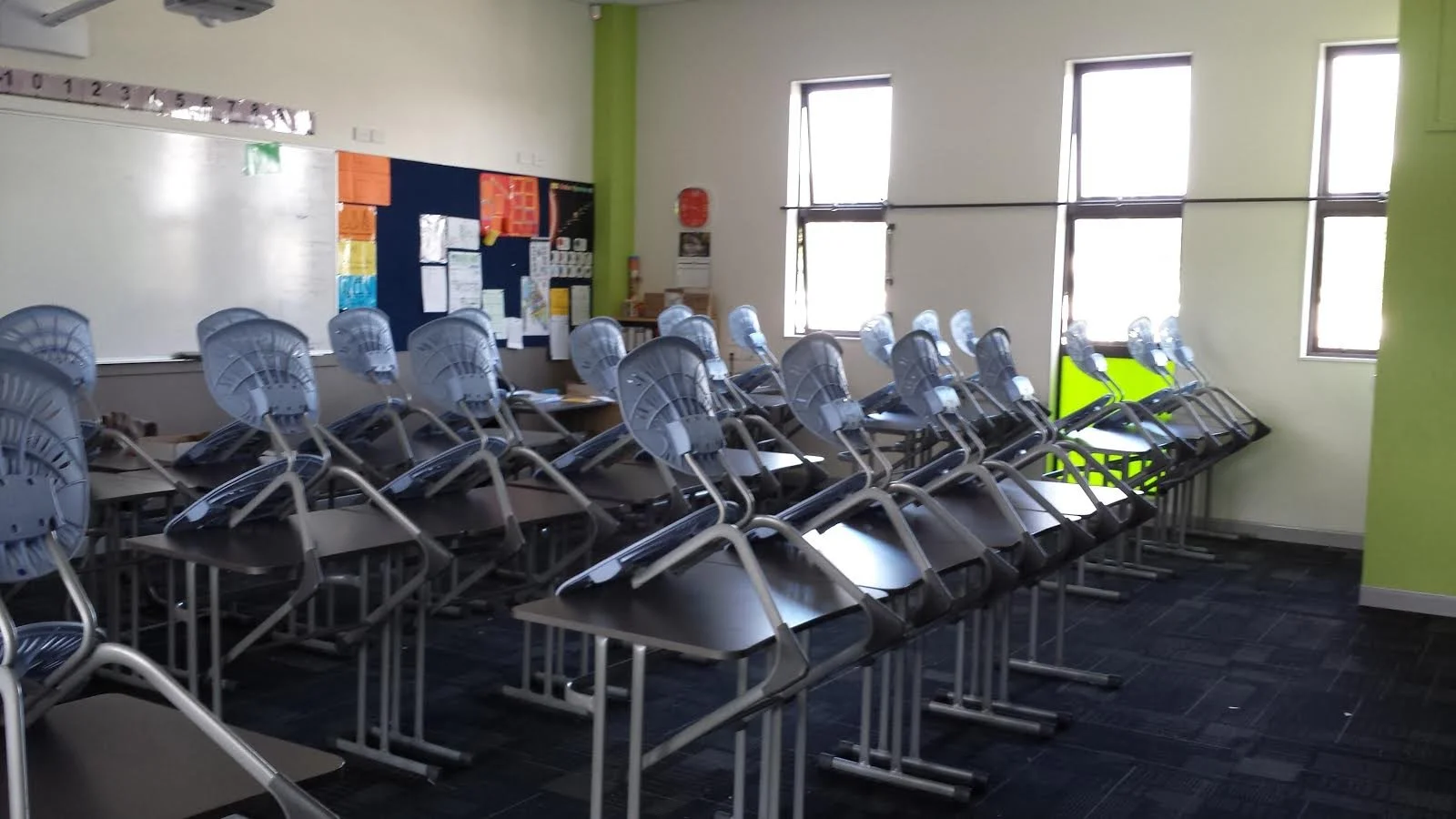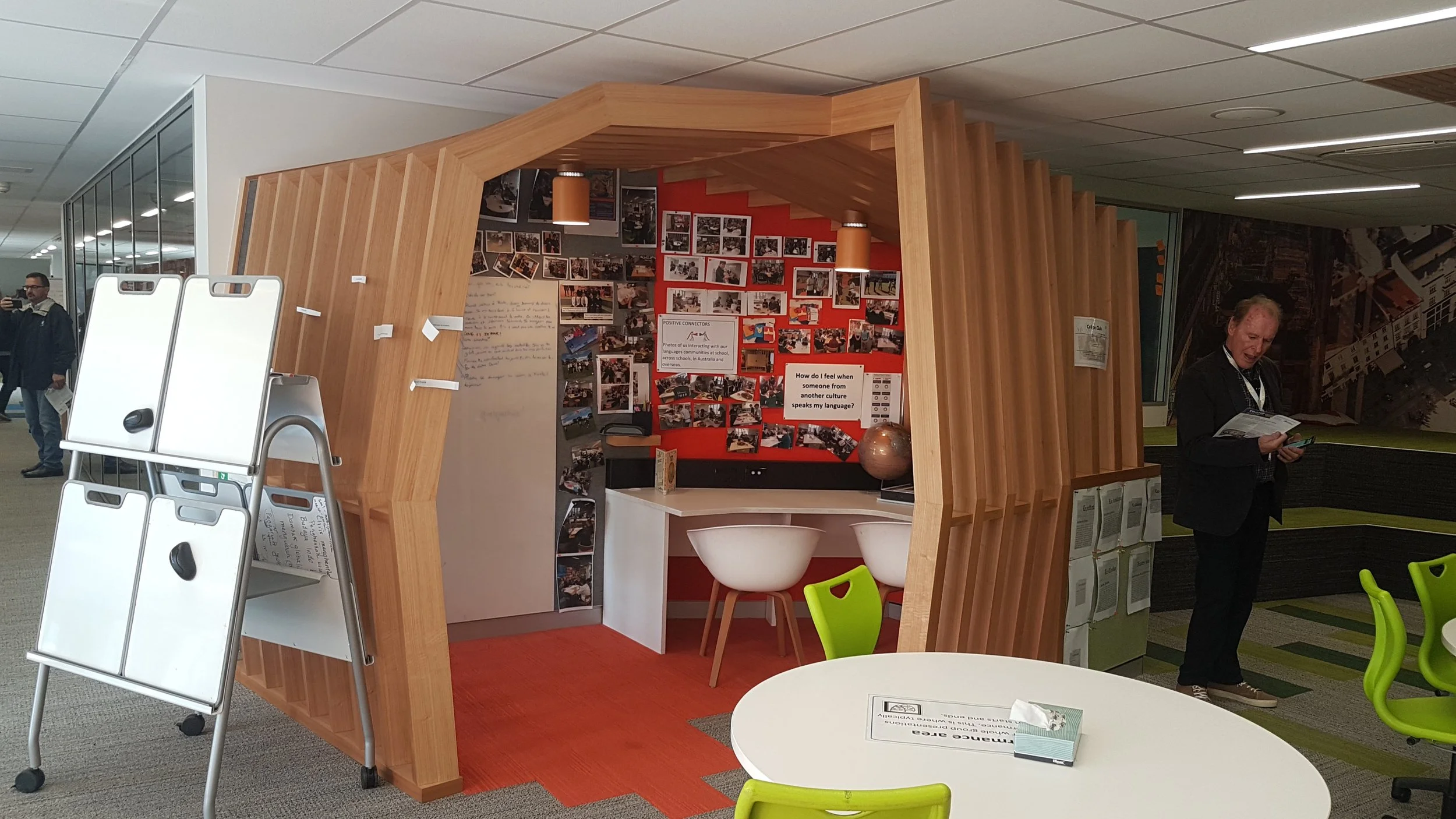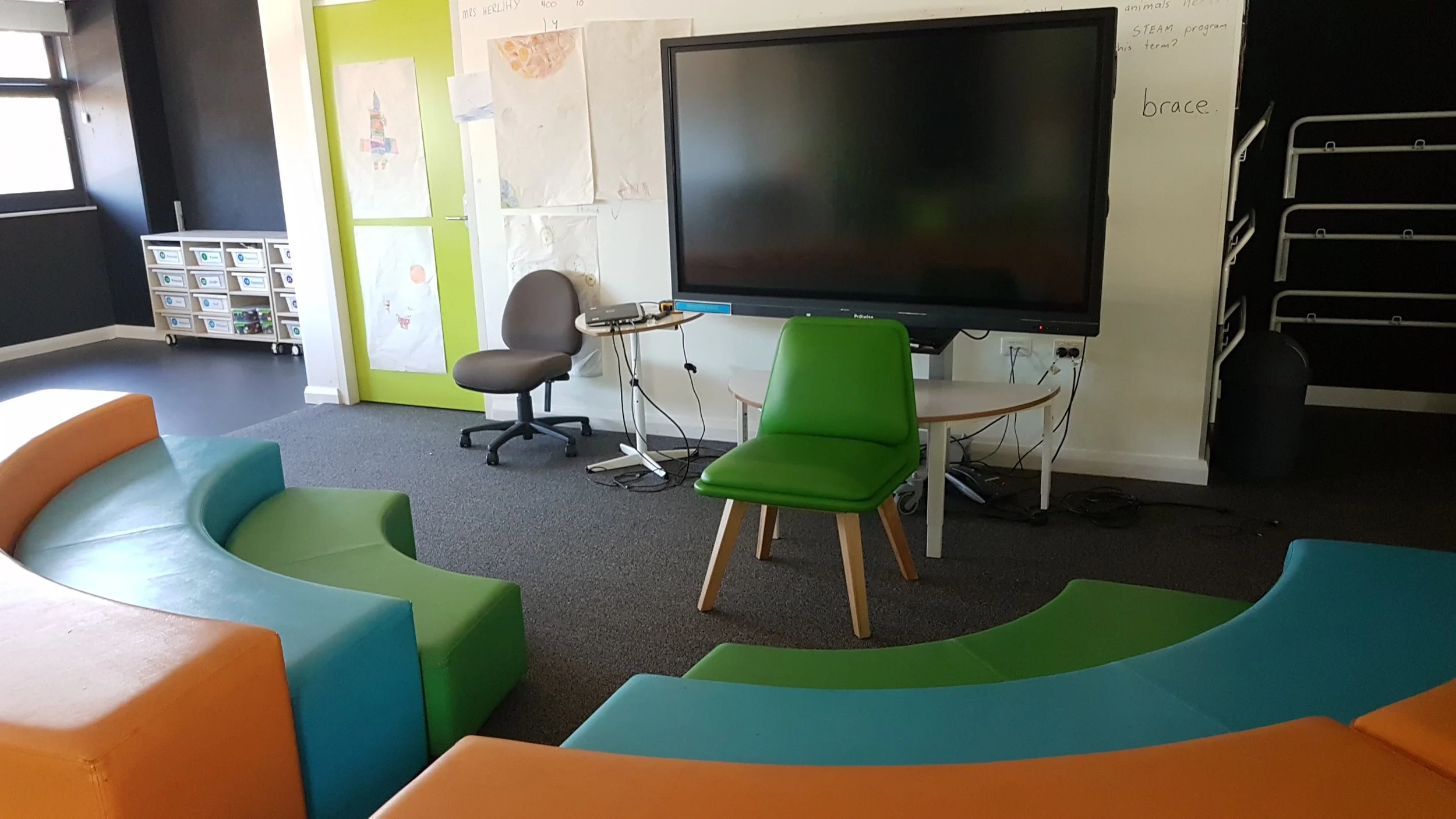Traditional school design is built around the ‘one teacher, one classroom, one class’ model, but contemporary learning environment design typically provides much more flexibility than that offered by the cellular classroom: different zones for noise levels, collaboration, quiet reflection, and access to the outdoors. While learning environment design can be incredibly complex, a simple way to start to think about how effective your learning environment is is to consider how well it supports a range of different teaching and learning activities. And a useful way to begin thinking about this is to consider a set of metaphors that have emerged over the years, based on David Thornburg’s work.
Some learning environment designs lend themselves more easily to the flexible provision of a range of zones than others.
The Cave:
Quiet withdrawal space to facilitate thinking, reading, writing, reflecting…
The Sandpit:
Wet area, science lab, art studio or makerspace for experimenting, building, creating, testing, exploring...
The Watering Hole:
Circulation space to connect with others, access resources, move from one space to another without disrupting learning…
Primordial Metaphors for Learning Spaces:
The Mountain top:
A ‘one to many’ space with whiteboard or screen that supports teaching, instruction-giving, sharing, celebration, speaking, presentations and seminars…
The Campfire:
Chairs and tables gathered together for story-telling, discussion, group learning, collaboration, peer tutoring…
Reflection:
Consider each of the ‘primordial metaphors’ above and agree as a team on how you can provide them in your learning environment. If you have access to meeting rooms or breakout spaces, how will you use them? Where will resources and circulation spaces be? Which spaces will work best as ‘mountain tops’? Where will noisy activity take place?
Further Reading:
Nair, P. (2014). Blueprint for Tomorrow: Redesigning Schools for Student-Centered Learning.
OECD (2013). Innovative Learning Environments.
Herman Miller – Learning Spaces Research: https://www.hermanmiller.com/research/
Key Takeaways:
-
We often take out cues from the physical environment around us. The way educators set up environments and settings subconsciously tells students what activities are valued. Physical space can powerfully influence learning behaviours.
-
Well-designed spaces allow teaching teams to adapt to student needs. The more flexible a learning environment is, the greater the likelihood student needs will be accommodated.
-
There is no single learning setting that will meet all the needs of a diverse class. Variety is important and—at any time—any student should be able to access the space they need to provide them with the conditions they need to learn.











